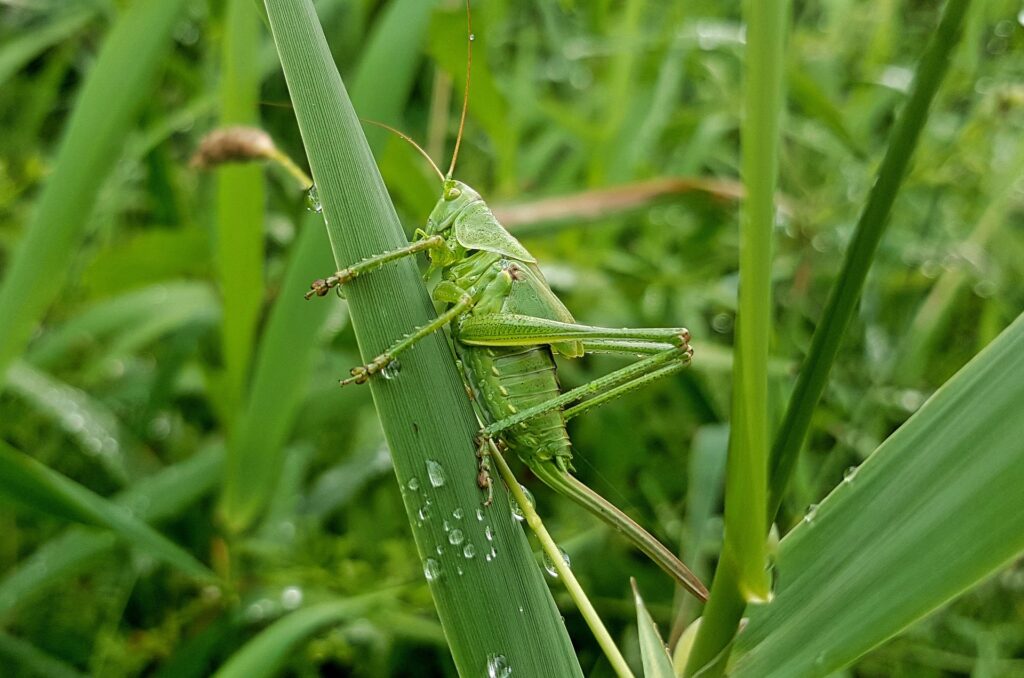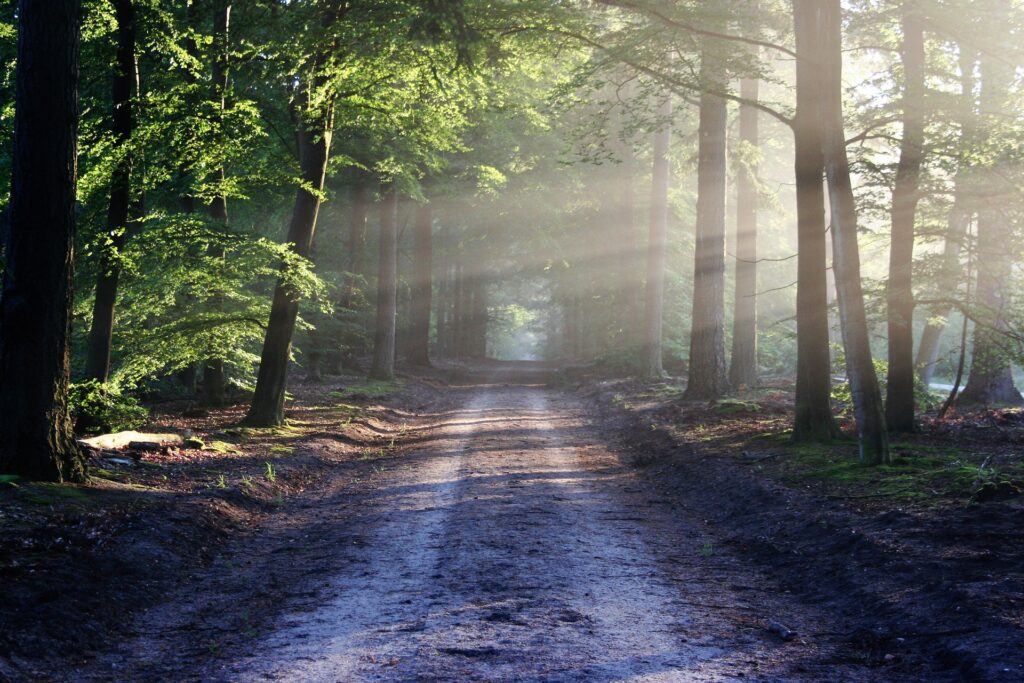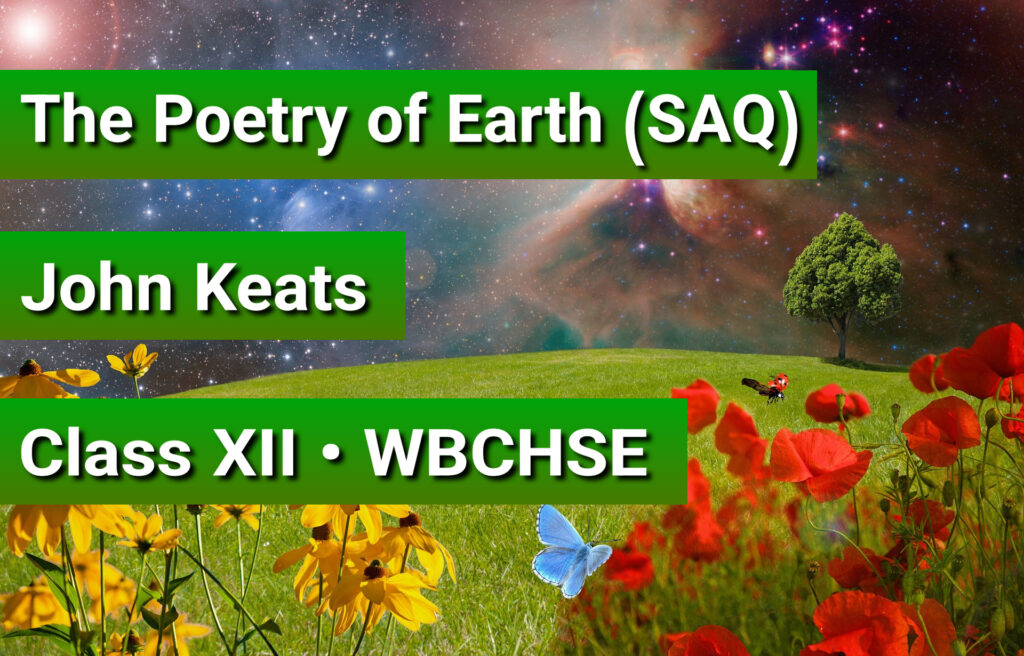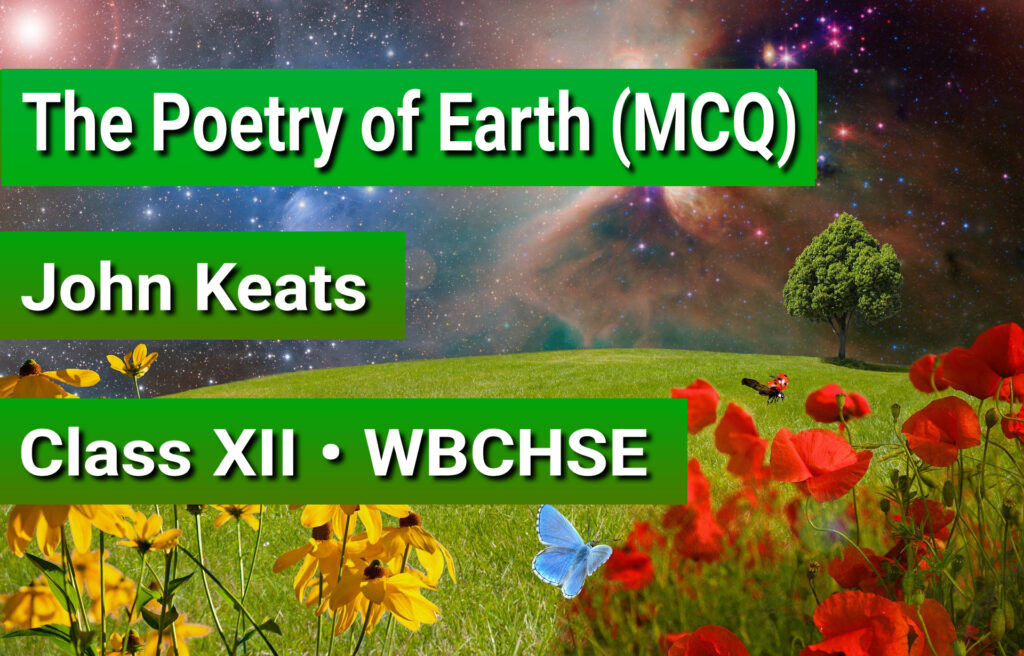The Poetry of Earth Long Questions and Answers • The Poetry of Earth Descriptive Questions and Answers
The Poetry of Earth Long Answer Type Questions
The Poetry of Earth LAQ • On the Grasshopper and Cricket

The Poetry of Earth by John Keats
(1) Justify the title of Keats’s sonnet “The Poetry of Earth”. [6] [H.S. 2018]
Ans. John Keats begins the poem with a statement that the music or poetry of earth is never dead. Here ‘the poetry of the earth’ refers to the continuous music of nature. To prove his point, the poet presents before us the songs of the Grasshopper in summer and the cricket in winter. In summer when the birds are faint by the hot sun and hide in the shade of the cooling trees, the Grasshopper continues the music of earth. Then comes the winter and everything becomes frozen, dull and lifeless. But the music of the earth is not dead. A shrill voice of the cricket breaks the silence of the winter. Thus, the music of the earth continues throughout the year. So, the title is appropriate.
(2) Why does Keats feel that the poetry of earth is never dead? [6] [H.S. 2015]
OR. How does Keats show that the poetry of earth never ceases? [6] [H.S. 2019]
OR. How does Keats show that the poetry of earth is never dead? [6] [H.S. 2022]
Ans. John Keats begins the poem with a strong statement that the music or poetry of earth is never dead. Here ‘the poetry of the earth’ refers to the continuous music of nature. To prove his point, the poet presents before us the songs of the Grasshopper in summer and the cricket in winter. In summer when the birds are faint by the hot sun and hide in the shade of the cooling trees, the Grasshopper continues the music of earth. Then comes the winter and everything becomes frozen, dull and lifeless. But the music of the earth is not dead. A shrill voice of the cricket breaks the silence of the winter. Thus, the music of the earth continues throughout the year.
(3) What does Keats mean by ‘poetry of earth’? Why does he say that this poetry never ceases? [2+4] [H.S. 2017]
Ans. By ‘poetry of earth’ John Keats means that the never-ending or continuous music of earth.
Part 2: see the answer to Question No. 2.
(4) Identify the voices of the ‘Poetry of Earth’. How does Keats establish its continuity through its voices? [2+4] [H.S. 2020]
Ans. The voices of the “Poetry of Earth” are the voices of the grasshopper and the cricket.
The poet presents before us the songs of the Grasshopper in summer and the cricket in winter. In summer when the birds are faint by the hot sun and hide in the shade of the cooling trees, the Grasshopper continues the music of earth. Then comes the winter and everything becomes frozen, dull and lifeless. But the music of the earth is not dead. A shrill voice of the cricket breaks the silence of the winter. Thus, the music of the earth continues throughout the year.
(5) What picture of summer is presented in “The Poetry of Earth”? How has it been carried on to the picture of winter? [4+2] [H.S. 2016]
Ans. In “The Poetry of Earth” Keats presents a beautiful picture of summer. In summer, the birds are faint in the scorching heat of the sun and hide in the shade of the cooling trees. They cannot sing. But the Grasshopper seems to enjoy the summer. It takes the lead and continues the music of earth. It’s voice can be heard from hedge to hedge and in the new-mown meadow. Though everything seems to be at standstill in the scorching heat, the Grasshopper keeps the poetry of earth alive in summer.
In a lone winter evening, a shrill voice of the cricket can be heard from the stove. It breaks the silence and increases the warmth. When one is sleepy, they confuse the cricket’s song with the grasshopper’s song. Thus the poetry of earth continues to exist in different seasons.
(6) “He rests at ease beneath some pleasant weed …” – From which poem is the line quoted? Who is the poet? Who ‘rests at ease’ and when? Describe his activities. [1+1+2+2] [H.S. 2023]
Ans. The quoted line is taken from the poem “The Poetry of Earth”.
The poet is John Keats.
The cricket takes rest at ease beneath some pleasant weed when it feels tired.
When the birds retire to cooling shads and stop singing, the Grasshopper continues the poetry of earth. It sings merrily. He expresses immense joy as he moves from hedge to hedge in the freshly-mown meadow. In the absence of the song-birds, it takes the lead, and enjoys the luxury of summer. It becomes the bard of summer.

*****
Read More:
The Poetry of Earth by John Keats SAQ Short Questions and Answers
Class 12 Chapter Wise Questions and Answers from PROSE



